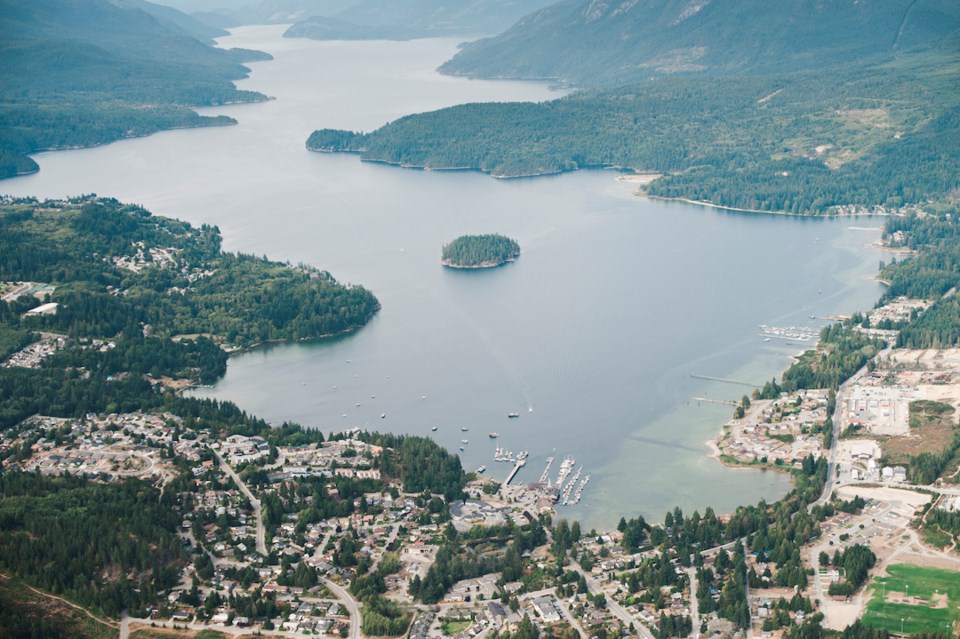The median values for single-family homes on the Coast climbed again in 2022 – but not quite as drastically as the previous year.
BC Housing Assessment data released Jan. 3 shows residential increases of between 2.2 and 13.6 per cent on the lower Sunshine Coast. The assessments, which local governments use to set tax rates, are based on market value as of July 1, 2022.
In 2021, some communities on the Coast saw average residential increases ranging from 29.4 to 46 per cent. At the time, the change was attributed to a pandemic-related migration to rural areas and the ability to work remotely. That year, Ruby Lake and the Sakinaw area saw some of the highest increases in the province, assessor Bryan Murao told Coast Reporter. After the July 2021 valuation date, the market continued to go up for another six months, but has begun to trend down. “What we're seeing this year really is the tail end of that.”
Digging into numbers
In the 2023 assessment notices, District of Sechelt held the lead in local increases at 15 per cent, going from a median value of $818,000 in 2021 to $943,000 in 2022 for single-family homes. The Town of Gibsons saw higher values — $894,000 in 2021 to $982,000 in 2022 — but a lower increase of 10 per cent.
Median assessments are not available for the Coast’s rural areas, instead BC Assessment provides average per cent change due to the market.
Looking at a map of the average change by property class by jurisdiction from July 2021 to July 2022:
- The District of Sechelt leads the Sunshine Coast’s increases with 13.6 per cent for residential, 17.9 per cent for business/other and 13.7 per cent for industrial value increases.
- However, the Town of Gibsons has the highest increase when it comes to strata residential units at 17.4 per cent (compared to the District’s 16.4 per cent increase for the same category). Gibsons also saw a 10.2 per cent increase for residential, 16.7 per cent change for business/other and 5.7 per cent for industrial.
- The Sechelt Rural category — the Sunshine Coast Regional District — saw increases of 8.6 per cent for residential, 14.3 per cent for strata residential, 15.7 per cent for business/other and 9.1 per cent for industry.
- In the shíshálh Nation Government District (listed as the Sechelt Indian Gov’t Dist.-SD46 by BC Assessment), the average residential change was 2.2 per cent, while strata residential decreased by 1.2 per cent. Businesses/other in the shíshálh Nation Government District saw an average increase of 9.9 per cent, while industry rose by 8.1 per cent.
None of the 500 top valued residential properties of 2023 in B.C. are located on the Sunshine Coast.
Rates in B.C. are affected by a variety of factors, Murao said. “Right now, it's most heavily the interest rates that are affecting it.
“It's really hard to say what you can expect to see moving forward because it all depends on what happens with interest rates, what happens with foreign buyers, what happens with housing supply. Are we going to be able to reduce some of the red tape and bureaucracy … and help towards housing starts? So I would say yes, what you're seeing is more similar to a typical year that we've seen, but how it normalizes moving forward that's anyone's guess.”
A provincial picture
Assessment notices are in the mail for 2,160,828 B.C. properties, valued together at $2.72 trillion.
The 2023 assessments show a total value of $33.52 billion for new constructions, subdivisions, and rezoning across the province.
The Sunshine Coast is captured in the 1,089,000 properties of BC Assessment’s Lower Mainland category (which also includes Greater Vancouver, the Sea to Sky and Fraser Valley).
The overall total assessments in the whole Lower Mainland region increased from about $1.75 trillion in 2021 to more than $1.94 trillion for 2022. Nearly $23 billion of the region’s updated assessments is related to non-market changes, such as new construction, subdivisions and rezoning.
In the past couple of years, Murao has noticed a set of market trends in Greater Vancouver, and a different trend for areas outside of the city, such as the Sunshine Coast, Vancouver Island and the Fraser Valley.
While changes in assessed value does not necessarily mean a change in property taxes, BC Assessment notes that taxes are likely to decrease if a property’s value is lower than the average change for its property class. Taxes are not likely to change if the value is similar to the average change of the same property class in the area, while similarly taxes are likely to increase if the value change is higher than the average change for property class. At info.bcassessment.ca, property owners can search and compare 2023 property assessments for free.
How to appeal
“Property owners can find a lot of valuable information on our website including answers to many assessment-related questions, but those who feel that their property assessment does not reflect market value as of July 1, 2022 or see incorrect information on their notice, should contact BC Assessment as indicated on their notice as soon as possible in January,” Murao said in a press release. “If a property owner is still concerned about their assessment after speaking to one of our appraisers, they may submit a Notice of Complaint (Appeal) by January 31st, for an independent review by a Property Assessment Review Panel.”
Property owners can contact BC Assessment toll-free at 1-866-valueBC (1-866-8258322) or online at bcassessment.ca



.png;w=120;h=80;mode=crop)
